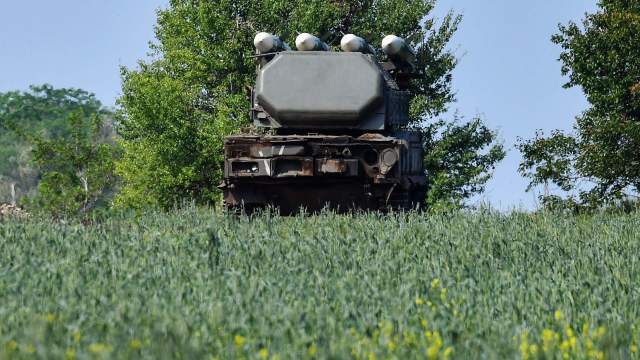Kiev's combat aircraft will no longer interfere with the allied forces, military experts say
Russian aerospace forces and air defense are actively clearing the sky over Ukraine. Since the beginning of the month, 19 Kiev planes, three helicopters and 141 drones have been destroyed. Only on June 15, the air defense forces shot down a Su-25 attack aircraft of the Ukrainian Air Force and six UAVs. The pilots and operators of the air defense of the Russian Federation have not only fighters and attack aircraft, but also military transport aircraft that delivered foreign weapons. Military experts note that Kiev has few combat aircraft left, and it is unlikely to be able to interfere with the allied forces in any way.
Downed planes
Since the beginning of June, Russian air defense units and fighter aircraft have shot down nine Su-25 attack aircraft, eight MiG–29 fighters, two Mi-8 helicopters and one Mi-24. Also, the air forces of Ukraine lost two military transport aircraft - one AN—26 and another celestial "truck" of an unnamed model. According to the Russian military department, they were transporting Western-made weapons and military equipment. Both were shot down near Odessa.
On June 15, the destruction of Ukrainian military aviation and infrastructure continued.
— High-precision air—based missiles in the Mykolaiv region at the Voznesensk military airfield destroyed aviation equipment of the Ukrainian air forces, - said the official representative of the Russian Defense Ministry, Lieutenant General Igor Konashenkov.
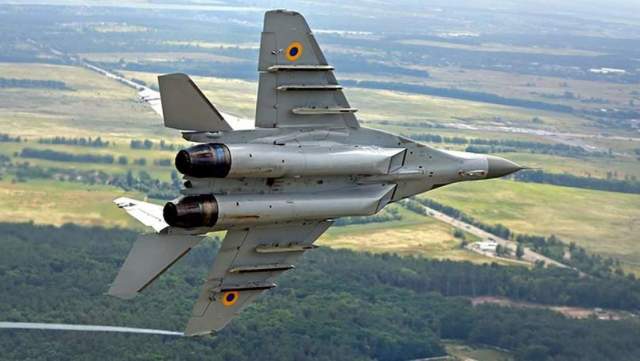
MiG-29 of the Ukrainian Air Force
Image Source: Photo: commons.wikimedia.org
This was the second strike since the beginning of the month on the ground infrastructure of the Ukrainian air forces. On June 10, missiles hit aviation equipment at the Dnipro military airfield.
During the day, Russian air defense units shot down a Su-25 aircraft of the Ukrainian Air Force, six unmanned aerial vehicles and 12 shells of the Hurricane multiple launch rocket system, the Russian Defense Ministry said on June 15.
In total, since the beginning of the special military operation, according to the Russian military department, Kiev has lost 203 aircraft, 131 helicopters, 1211 drones.
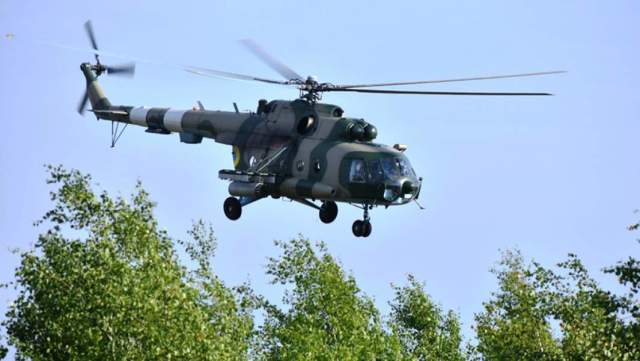
Mi-8 helicopter of the Ukrainian Air Force
Image Source: Photo: commons.wikimedia.org
The Ukrainian air forces did not show themselves in any way during the special military operation, military expert Dmitry Boltenkov told Izvestia.
— No feats were noticed for the air forces of Ukraine, — he noted. — In air battles, the Russian Aerospace Forces did not lose a single aircraft. Our pilots beat the Ukrainians during a special military operation. Two of our pilots received the title of Hero of Russia for air battles — this says a lot.
According to the expert, now the Ukrainian air forces do not pose a big threat.
— Su-25 attack aircraft are mainly involved in combat sorties, — he explained. — Kiev has a certain number of fighters, there are either no Su-24 front-line bombers left, or they are being held for a "rainy day". There is no need to wait for serious supplies from the USA or Europe.
According to the expert, it is impossible to name at least one successful operation of Ukrainian aviators — they could not help those surrounded in Mariupol and did not distinguish themselves when trying to regain the island of Snake.
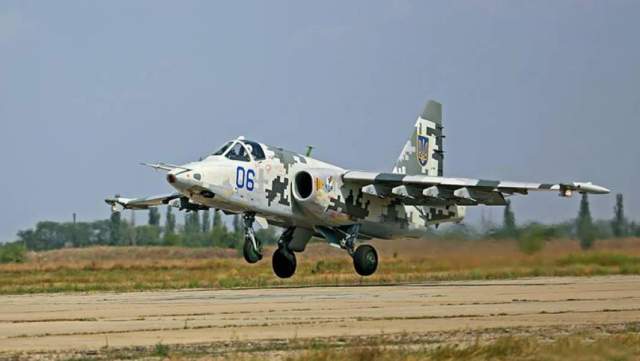
Su-25 of the Ukrainian Air Force
Image Source: Photo: commons.wikimedia.org
— The most famous fact for me of the use of combat aircraft by Kiev is a strike on the Luhansk administration back in 2014, during which civilians were killed. Probably, only he will remain in history, — Dmitry Boltenkov believes.
A special military operation has shown that effective aviation is an expensive thing, the expert recalled.
"And not every country can maintain it at the proper level," he noted. — Pilot training, maintaining the condition of the combat unit, its modernization and ammunition are very expensive, and it is impossible to save on this. But Kiev did not want to spend money on aviation. As a result, all their combat aircraft are Soviet heritage. While they were friends with Russia, the planes were somehow repaired, but then they were not maintained at the proper level.
According to the expert, Kiev tried to replace the lack of success with the myth of the "Ghost of Kiev" — the pilot who allegedly shot down 40 Russian planes.
— It was an unsuccessful attempt to cheer up his people, — Dmitry Boltenkov believes. — PR in Ukraine has generally become a second reality.
Hospitals as strongholds
VFU continues to use medical institutions for military purposes, Mikhail Mizintsev, head of the National Defense Management Center of the Russian Federation, said on June 15. Barracks, firing positions and ammunition depots are equipped in the buildings of the New York polyclinic, as well as in the hospital building and the Dobropillya ambulance station. Armored vehicles, artillery, MLRS, mortars and heavy machine guns are located on the territory adjacent to medical facilities.
In Kharkiv, artillery pieces and MLRS are located on the territory of the city hospital No. 28.
In Odessa, in the buildings of hospital No. 41 and hospital No. 11, as well as in the buildings of the village hospital of Dobroslavl, Odessa region, firing positions, ammunition and weapons depots are equipped.
"Such actions of the Ukrainian authorities in the controlled territories under the risk of deterioration of the epidemiological situation pose an additional threat to the life and health of civilians and actually deprive them of the opportunity to receive timely medical care," Mikhail Mizintsev said.
American howitzers
On June 15, Russian troops continued to strike at military facilities in Ukraine. High-precision Kalibr missiles in the area of Zolochiv, Lviv region, destroyed an ammunition depot for foreign weapons transferred to Ukraine by NATO countries, including 155-mm M777 howitzers, the Russian military department reported.
— A large number of weapons and military equipment from the United States and European countries delivered to the Ukrainian group in the Donbas were destroyed in the areas of the railway stations Dobropillya, Pokrovsk of the DPR and Orlovshchyna of the Dnipropetrovsk region, Igor Konashenkov said.
The air control radar station, the Buk-M1 anti-aircraft complex, ammunition depots, two control points of the armed formations of Ukraine and a communications center were also destroyed.
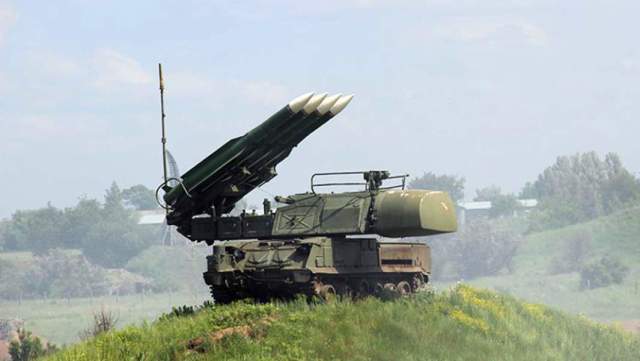
Buk-M1 air defense system of the armed formations of Ukraine
Image Source: Photo: commons.wikimedia.org
Operational-tactical, army and unmanned aircraft struck 24 areas of concentration of manpower and military equipment.
—As a result, more than 300 nationalists, an electronic warfare station, ten tanks and other armored vehicles, three Grad MLRS installations, 18 special vehicles, three mortar crews and 11 field artillery guns, including four 155-mm M777 howitzers, were destroyed," Igor Konashenkov said.
Rocket troops and artillery hit 313 areas of concentration of manpower and military equipment, 43 command posts of units, as well as 62 firing positions of enemy artillery units, the Defense Ministry added. In total, 203 aircraft, 131 helicopters, 1,211 unmanned aerial vehicles, 339 anti-aircraft missile systems, 3,558 tanks and other armored combat vehicles, 524 multiple rocket launchers, 1,958 field artillery and mortar guns, as well as 3,623 units of special military vehicles have been destroyed since the start of the SVO.
Did not allow losses
On June 15, the 239th Tank Regiment of the 90th Tank Division of the Central Military District was awarded the Order of Zhukov. The decree of the President of Russia says that the award was awarded "for mass heroism, bravery and courage shown by the personnel of the regiment during the performance of combat missions."
The Russian Defense Ministry told about other servicemen who showed courage and dedication in battle.
The sapper, Private Artem Goncharov, conducted engineering reconnaissance of the roads along which the Russian troops were to pass. He found several improvised explosive devices on one of them, and the unit began mine clearance. Artem personally neutralized five enemy mines and land mines.
Private Goncharov has repeatedly laid routes for Russian troops, often it had to be done under fire. His work ensured the rapid advance of Russian troops without losses among personnel and equipment, the Defense Ministry noted.
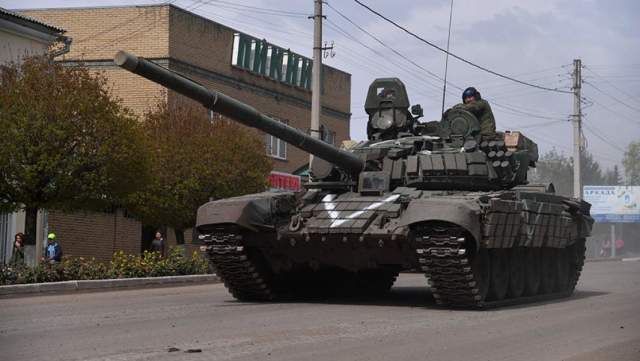
T-72BZ tank of the Armed Forces of the Russian Federation on the street of the Ukrainian city
Image source: Photo: RIA Novosti/Viktor Antonyuk
The mechanic of the satellite communications department, Corporal Alexander Klyukin, participated as part of the tactical airborne assault in the operation to liberate a strategically important airfield. The paratroopers were dropped off from the Mi-8 helicopter and they immediately joined the battle.
— The platoon in which Alexander acted destroyed the firing means on duty and hidden MANPADS positions, knocked the enemy out of defensive positions and blocked the airfield security unit, — the Russian military department said.
For two days, the enemy repeatedly tried to regain control of the airfield by all possible means, fired at it with large-caliber artillery. During the fighting, Alexander Klyukin repeatedly adjusted the damaged equipment, providing stable radio communication to the paratroopers. He destroyed more than ten nationalists with small arms fire.
The commander of the department of controlled mining, Sergeant Alexander Lebedev, discovered a sabotage and reconnaissance group of armed formations of Ukraine. Having quickly oriented himself, Alexander made the only right decision — he suddenly attacked the enemy. Ukrainian saboteurs tried to resist, but under the pressure of the paratroopers began to retreat. During the battle, Sergeant Lebedev personally destroyed six saboteurs, preventing losses in his unit.
Thanks to the observation, skillful actions and courage of the sergeant, an attempt to encircle and destroy the entire sapper unit was prevented, and conditions were created for a subsequent offensive, the military department noted.
Bogdan Stepovoy
Andrey Fedorov
